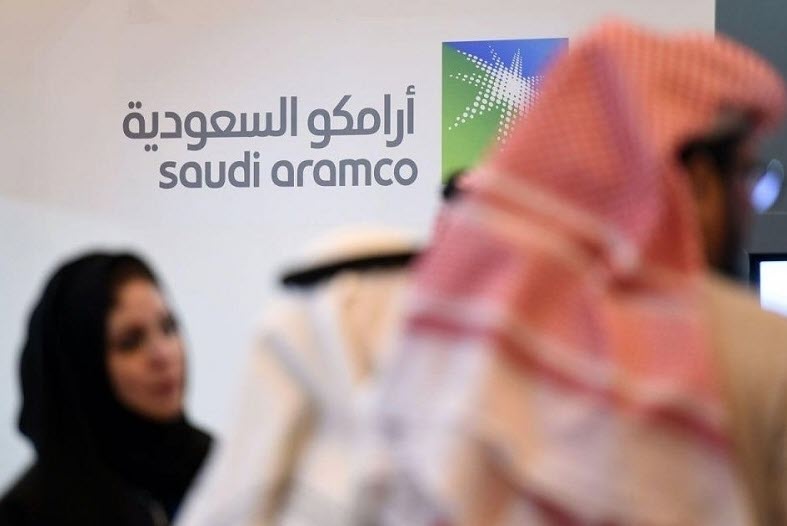Argus
State-controlled Saudi Aramco is facing delays closing its planned purchase of a stake in China’s biggest private-sector refining complex, but remains committed to the deal despite pullbacks elsewhere.
Aramco signed an initial agreement in October 2018 to buy a 9pc stake in the 400,000 b/d ZPC refining complex at Zhoushan in the eastern province of Zhejiang, which is led by private-sector firm Rongsheng.

Aramco and ZPC are both committed to the stake sale but the process of finalising the agreement has hit delays, according to officials with direct knowledge of the deal. Issues with local bureaucracy and the expiry of some initial approvals may have held up the process, one official close to the deal said, although this could not be confirmed with the parties involved.
Due diligence for Aramco’s stake purchase has “basically” finished but details are still being discussed, Rongsheng said in its results briefing last month. Petrochemical-focused Rongsheng owns 51pc of ZPC.
Aramco declined to comment directly on the status of the deal. “China remains an important market and we intend to continue to grow our downstream presence in that region”, it told Argus.
Aramco is buying the 9pc stake from local government-owned Zhoushan Marine Development and Investment, which will exit the project after the sale goes through. The deal process is continuing, a local government official said, without providing more details. The remainder of the project is owned by Shanghai-listed Zhejiang Tongkun and local government-owned Juhua, which each hold 20pc stakes.
The value of Aramco’s stake purchase was never released. But the oil market has changed significantly since the deal was signed in October 2018, prompting Aramco to rethink its overseas expansion plans. Its investment in another Chinese project, a 300,000 b/d greenfield refinery and petrochemical complex at Panjin in the northeast province of Liaoning, is now in doubt.
The ZPC project presents a stronger investment case, given a more bullish outlook for fuel demand in eastern than northeastern China and the fact that ZPC is already operating. The refinery started up in 2019 and is planning to start trial runs at a second 400,000 b/d phase by the end of this year, which will take capacity to 800,000 b/d and make it the single-largest refinery in China.
Aramco signed a separate agreement with government-owned Zhejiang Energy in 2019 to invest in a retail fuel network, which will be integrated with ZPC as an outlet for the refined products.
Aramco has tied up crude supply deals with several Chinese refineries. The ZPC deal also includes a supply agreement, under which Aramco will supply up to 60pc of ZPC’s crude feedstock — equivalent to as much as 480,000 b/d when the project reaches its full capacity — and use the refinery’s crude storage facilities to serve its Asia-Pacific customers.
Aramco also has a long-term contract to supply the 400,000 b/d Dalian Changxing plant operated by private-sector Hengli, the other major new petrochemical-focused refinery to come on line in China. Both private-sector refineries are designed to run almost wholly on Saudi crude.
Downstream investment stalls
But Aramco’s direct downstream investments in China have stalled since it took a 25pc stake in state-controlled Sinopec’s 240,000 b/d Fujian refinery and 22.5pc of an associated retail network in 2007. Years of talks to invest in state-controlled PetroChina’s 260,000 b/d Anning refinery in southwest Yunnan came to nothing, partly over the issue of marketing rights.
Saudi Arabia lost its position as China’s top crude supplier to Russia in 2016-18, after independent refineries won import rights from the government in 2015, boosting Russian purchases. But Saudi sales to China surged in 2019, thanks partly to the start-up of the ZPC and Hengli refineries.
Aramco had been targeting $500bn in global upstream and downstream investments in the next decade, including new petrochemical projects in Asia’s two most important growth engines, China and India. But the impact of the Covid-19 pandemic on oil demand has forced it to reduce capital expenditure to close to $25bn this year, from a previously planned $35bn-40bn, with further significant cuts to follow.
| China’s crude imports from Saudi Arabia and Russia (mn b/d) | ||
| Saudi Arabia | Russia | |
| 2017 | 1.04 | 1.19 |
| 2018 | 1.55 | 1.85 |
| 2019 | 1.67 | 1.55 |
| 2020 (Jan-July) | 1.73 | 1.76 |
| Source: China customs | ||

